The timber merchants

The timber merchants of Knysna in the late 19th and early 20th Centuries
Two companies dominated the timber economy - and, indeed, much of the general economy - of Knysna in the late 19th Century and well into the 20th Century: Thesen & Co., and Geo. Parkes & Sons Ltd.
But, of course, they weren’t the only players in town.
Thesen & Co.
The brothers Arnt Leonard and Mathias Thesen arrived in Knysna from Norway via Cape Town in 1869, and settled here the following year. They’d decided to emigrate from their hometown, Stavanger, after the collapse of the family firm, A.L. Thesen & Co. (traders and ship-owners, established 1845), during the economic downturn following the Second Schleswig War - or the German-Danish War - of 1864.
They packed their families into their 117-ton schooner, Albatross - the last of ten ships that the company had owned - and set sail for New Zealand. After a stopover to re-provision in Cape Town, though, the ship ran into trouble off Cape Agulhas, which forced a return to the Mother City for repairs. It was during this second stop in Cape Town that the brothers learned from the Swedish-Norwegian consul, Carl Gustaf Åkerberg, of the dire need - and massive shortage - of shipping on the South African coast. Most of the vessels on the local routes had been recalled to Europe due to the threat of war between Germany and France.
After Mathias’s son, Hans, sailed a number of cargo charters to Knysna - and brought a number of loads of timber back to Cape Town (all of which helped to pay for the repairs), the senior members of the family decided to visit Knysna personally - and they cancelled their plans for New Zealand almost as soon as they’d seen the place. They settled in Knysna, and the brothers set up a new firm, Thesen & Co., in 1870 (although Mathias left the partnership soon afterwards to take up farming near Plettenberg Bay).
Thesen & Co. involved itself in timber from the start: it extracted it from the forest, and it kept the Albatross’s holds filled with it, delivering to whichever destination in South Africa needed it. And, of course, it bought large tracts of forested land, too. (Sadly, though, the Albatross was wrecked in 1874 - ironically, off Cape Agulhas again. But the passengers and crew made it to Dyer Island, from where they were eventually transported to the mainland in boats rowed by local fishermen.)
In 1875, Arnt Leonard passed away, and his son, Charles Wilhelm (14 November 1856 – 1 February 1940), joined the business.
According to the Thesen Family History,
“It appears from all accounts that the nineteen year old Charles took over the day to day affairs of the Company while his brothers, and Hjalmar in particular, moved between Knysna and Cape Town overseeing the important cargo handling business there.
“As time went by, Charles was to reveal an exceptional talent for leadership and business, which resulted eventually in his being acknowledged as the head of the firm. From letters in the old letter press books of the 1890s and early 1900s (now in the Cape Archives) it is clear that the firm, and C.W. Thesen in particular, had wide ranging interests and explored every and any avenue in the hope that one or the other might prove to be of benefit to the area or of profit to the firm.
“These included attempts to get a newspaper established in Knysna (there was one in George), encouraging a tailor to set up shop in Knysna (to make C.W. Thesen’s suits!), agricultural experiments, tree growing, hay making, farming, lignite mining, gold prospecting at Millwood, [and] insurance, and a constant badgering of authorities for better school equipment, roads, a railway and communications in general. C.W. Thesen even tried to persuade the management of the dynamite factory to come to Knysna instead of Somerset West.”
WHALING
At the request of the company, the pilot at The Heads, John Benn Jr., carried out a census of whales from his viewpoint on the Eastern Head at the Knysna Lagoon mouth from 1903 to 1906. Probably as a result of his favourable report, Thesen & Co. became agents of the Norwegian company, Hvalfangerseskabet Harald Haarfagre, when the latter set up a whaling station on Beacon Island in Plettenberg Bay. Seven new whaling ships (Bitou, Formosa, Goukama, Knysna, Piesang, Plettenberg, and Tzitzikama), a factory ship (the Haugerland), and two supply ships (the Lesseps and the Sigrun) were ordered from Norway.
Whaling continued steadily until 1914, when a fire destroyed much of the whaling station, and the Piesang was wrecked when trying to enter the Knysna Lagoon. Five of here crew were lost, and, although her captain was rescued, he died shortly afterwards, too.
With the outbreak of the First World War, the demand for and price of whale oil increased, and the 1915 whaling season was considered a huge success. By 1916, though, there was a glut of over 25,000 barrels of whale oil at Plettenberg Bay (9,000 left over from 1915, and a further 16,000 barrels-worth held in storage tanks). Delivery to the markets was almost impossible since the war had interfered with the lines of transport to Europe, and, with whaling only possible during the winter months, the company couldn’t be made to pay.
The factory stopped working in December, the equipment was sold to the Union Whaling Company in Durban, and the remaining whaling ships were sold to various new owners.
SHIPPING
Shipping was possibly one of the Thesen’s most visible successes - and most of that was due to its interests in timber.
After the loss of the Albatross, the firm acquired the 191-ton brig Ambulant, which would (in 1883) became the first ship to take on cargo (3,000 yellowwood railway sleepers) at Knysna’s new government jetty on Paarden Island (which would become known as Thesen’s Island after the company bought it from the estate of one of George Rex descendants in 1916. Prior to 1883, ships like the Albatross would have tied up at the stone jetty on which the Knysna Yacht Club now stands. And before 1867 - when local businessman `Skipper' Horn completed the Yacht Club jetty - ships’ captains would simply sail onto the sandbanks at high tide, and wait for the water to subside before offloading their passengers and cargo.
In 1894 the Thesen Line bought its first steel vessel - the 427-ton steamship Agnar (nicknamed ‘Agony’ by local children who travelled aboard her to boarding school in the Cape) - which was joined by (amongst others) the 708 ton Ingerid in 1899, the 100-ton suction dredger Clara in 1913, and the 600-ton Karatara in 1916.
The fleet’s flagship, though, was the 1,019-ton Outeniqua, which was purpose-built for Thesen & Co. by Porsgrund in Waersted, Norway, and registered in Cape Town in 1915. She was both a cargo ship and a passenger carrier - although, as Margaret Parkes and V.M. Williams would write in ‘Knysna The Forgotten Port’ (Emu Publishers, Knysna, 1988) - she had “accommodation for fifty passengers, with a ladies’ saloon and a dining room on deck, but the passengers’ appointments, both first and third class, were popularly considered to be, in fact, more suitable for the government guano trade.”
Encouraged by the success of their shipping interests, the Thesens set up The Thesen’s Steamship Company Limited in 1916, with a capital of one hundred thousand pounds - and in 1921 it and its entire fleet were sold to the Houston Line of Liverpool in England. In order to capitalise on the the value of the goodwill that the line had generated during fifty years of operations on the South African coast, Houston’s continued trading under both the Thesen name, and the Line’s well-known insignia: a single white star on a bright red field.
SAWMILLERS
Thesen & Co. established its first sawmill and wagon component manufacturing works in Brackenhill, about 10 km east of Knysna, but this was moved to Paarden Island in 1924. This brought operations close to the shipping wharf, and to the terminus of the 22-mile-long, narrow-gauge Coffee Pot railway (South Western Railway Company), which delivered logs from the forests. (C.W. Thesen served as chairperson of the South Western Railway Company for a period of thirty-five years.)
The company also established the Knysna Boatyard on Thesen's Island - in the building now known as The Boatshed in Thesen Harbour Town.
Interestingly, Thesen's Boatyard saw service during the Second World War: it built 640 craft for the Allied Forces. The largest of these were ten ships of the Fairmile class (wooden submarine hunting boats), while the smallest were long boats for use as life rafts. After the War, the yard built fishing vessels and pleasure craft, including yachts and houseboats. It was eventually sold off to independent investors, but it was closed as a result of bankruptcy during the 1980s.
The Thesen’s holding company, though, had a little more success. The Thesen Family History again:
“At the time of the sale of Thesen shares - all family held – to Barlow Rand in 1974, the Company owned five thousand hectares of Radiata Pine which was then the largest block of this species in the country. Thesens had been the pioneers in establishing this Californian softwood in South Africa. It also owned eight hundred hectares of Karri Gum (Eucalyptus) plantations as well as three hundred hectares of indigenous forest. The decision to sell had been taken by all the members of the family at a general meeting.”
Geo. Parkes & Sons Ltd.
George Parkes - chair of AF Parkes & Co. Ltd., of Birmingham - arrived in Knysna in 1891. Attracted by the opportunities created by the local hardwoods, he immediately set about buying a local steam sawmill as well as large portions of the Knysna Forests.
George formed the Knysna Forest Company in 1892 - in which year he also imported heavy duty woodturning machines from the USA for the manufacture of tool handles, furniture legs, and wagon parts (all of which had previously been made in Knysna by hand.) George also began exporting boxwood to England and France for use in the weaving industry.
By 1897, George’s second son - also George - had arrived from England to join his father in the business, and another son, Stephen, followed in 1898.
The Knysna Forest Company didn’t do very well during the years of the South African War (1899-1902), though, and it was went into liquidation in 1902. Having acquired all its shares, George renamed it George Parkes & Sons - which his youngest son (who joined the firm in 1903) would later re-name Geo. Parkes & Sons Ltd.
With growing prosperity, the company moved its sawmill into a modern, purpose-built, brick-under-corrugated-iron building in 1919. Like Thesen’s Sawmill, this mill and its staff commissary were also served by the Coffee Pot Railway. (An attractive, gabled structure, the mill would later be repurposed as the shopping centre, Woodmill Lane.)
During the middle years of the 20th Century, Geo. Parkes & Sons Ltd also ventured into the manufacture of packing cases and fine furniture, and eventually into plantation forestry, too.
In 1984, it moved its mill into Knysna’s Industrial Area in response to the rapid expansion of the town. By 2005, however, changes in government strategy - which contributed to a contraction of the local timber economy - forced the company to make the decision to discontinue sawing, and to concentrate on forestry and the growing of trees.
The company still operates from its offices in St George’s Street, Knysna (built in in 1924) - and it remains in the Parkes’ family control to this day.
Templeman’s
One of the lesser-known trading companies, Templeman, Ltd., Timber and General Merchants and Furniture Manufacturers, was established in around 1880 by J.H. Templeman, and incorporated as a Limited Company in 1915.
According to the 'South African Who's Who in Business' (1921-1922):
'An extensive turnover is done throughout the Union of S. Africa in all kinds and varieties of Cart and Wagon Woods grown in the celebrated Knysna Forest, which are thoroughly seasoned and ready for use. Staff, 25.
'In addition to the Timber Department, there are up-to-date stocks of Drapery, Outfitting, Boots and Shoes, Grocery, Hardware, Crockery, etc."
Templeman's was later sold to Thesen & Co.
Templeman's Building still stands on Church Square, opposite Memorial Square, on Main Road. It now houses retail businesses, a gifts and curio shop, and a coffee shop.
The timber merchants and the woodcutters
The relationship between the timber merchants and the woodcutters who lived and worked in the Knysna Forests is described in A.M. Grundlingh’s paper, “'God Het Ons Arm Mense Die Houtjies Geqee': Towards a History of the 'Poor White' Woodcutters In the Southern Cape Forest area c. 1900-1939” (University of the Witwatersrand) Download pdf (675 kb) here.
“In trying to account for the poverty of the woodcutter population, it is of little explanatory value to adopt the notion that they were 'prisoners of their culture', which implies 'that once a people has acquired a pattern of behaviour more suited to the past, once they have been imbued with values and norms of a bygone age, they can simply not adapt themselves to a modern economy.' On the contrary, the impact of 'modern economy', and more specifically merchant capital in the area, had more to do with the poverty of the woodcutters than their presumed 'backwardness' and' laziness'.
“While it is admitted that merchant capital differs qualitatively from industrial capital and is involved at the level of exchange rather than the level of production, in the Southern Cape forest region it was, in the absence of any significant industrial economic base, powerful enough to exert a decisive influence on social relations. Indeed, if the early Randlords on the Witwatersrand were central in the shaping of the socio-economic environment in the Transvaal and beyond, the timber merchants, sawmill owners and general dealers (often rolled into one) were the financial giants of the forests and, though on an obviously smaller scale, of comparable importance in determining the contours of the social landscape in the area.”


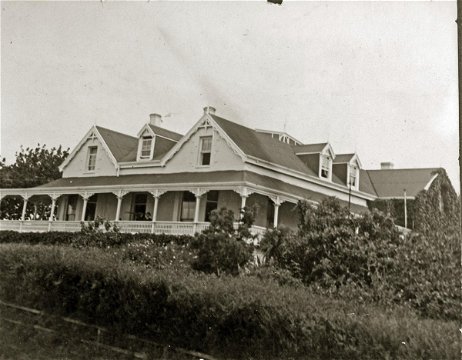
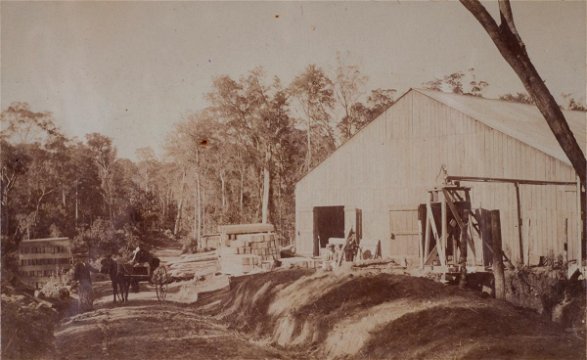

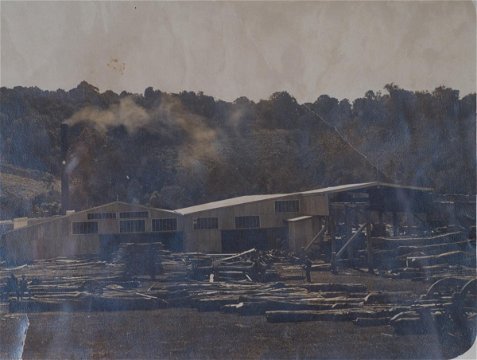



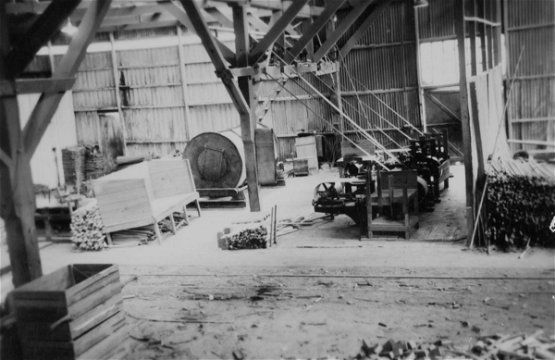
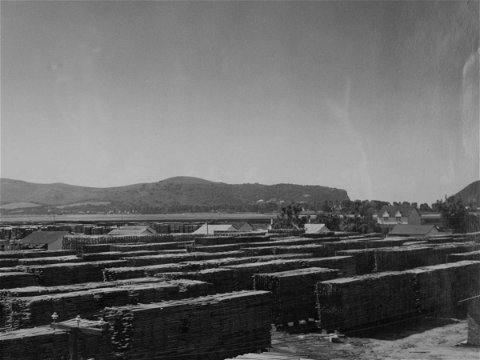
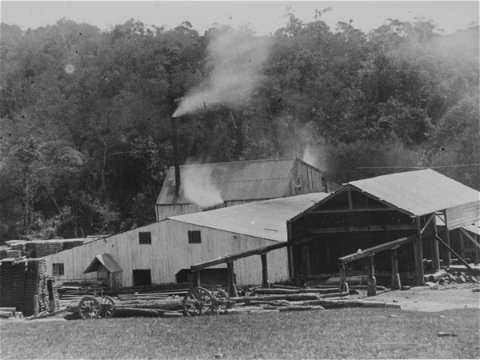

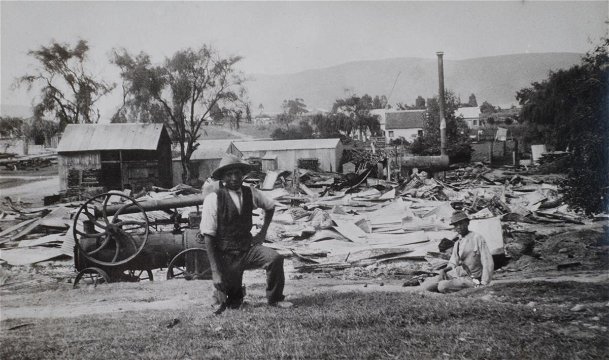
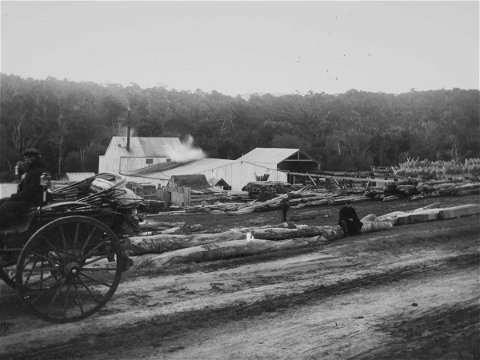
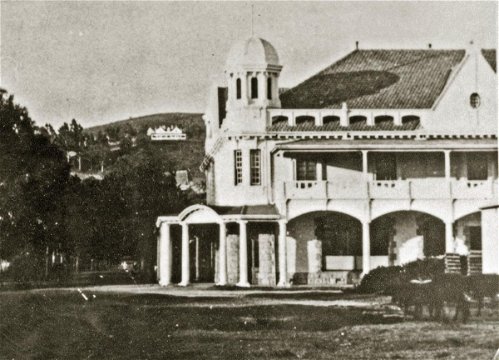
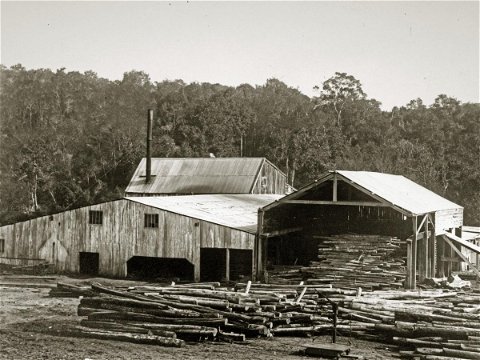
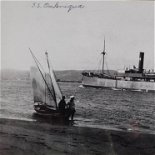
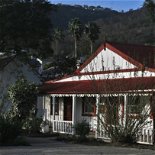



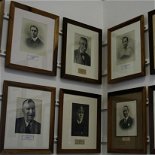

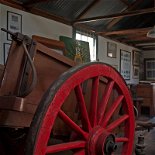
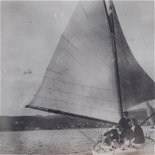

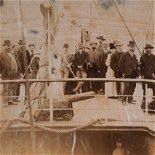
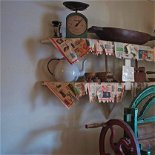


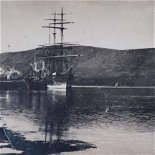


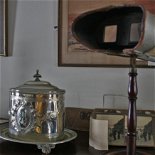
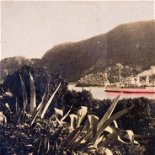
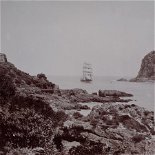

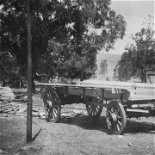
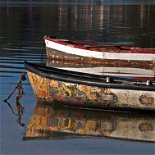
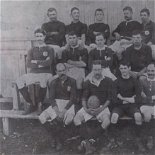
Share This Page